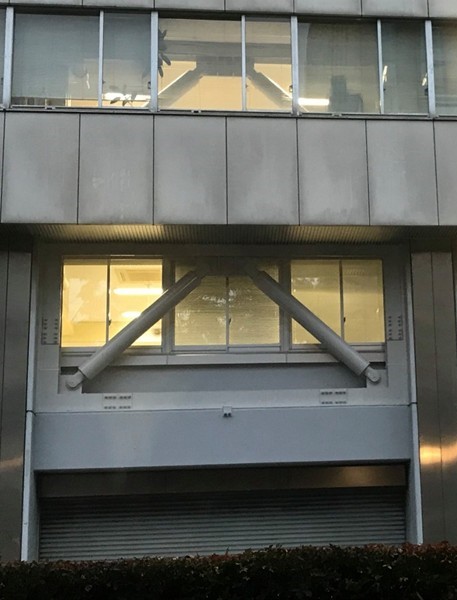กลับไปที่นวัตกรรมทั้งหมด
ประสิทธิภาพการต้านทานแผ่นดินไหวของอาคาร โดยใช้แดมเปอร์คู่
Seismic Resistance Efficiency of RC Building using Dual Damper
@คณะวิศวกรรมศาสตร์
#KLLC 2024
#Smart City

รายละเอียด
ที่ผ่านมามีการรับมือกับการเกิดแผ่นดินไหวเพื่อไม่ให้อาคาร, สิ่งปลูกสร้างได้รับความเสียหาย โดยการขยายหน้าตัดเสาชั้นล่างให้มีขนาดใหญ่ขึ้น(เสริมแรง)และเสริมค้ำยันด้านข้างแนวทแยงเพื่อเพิ่มประสิทธิภาพในการต้านการเคลื่อนตัวทางด้านข้าง เช่น Reinforced Concrete Jacketing, Steel Jacketing, bracing แต่อาคารเหล่านี้ไม่ได้ออกแบบมาให้มีแรงด้านข้างสูง จึงไม่สามารถต้านทานแรงด้านข้างที่อาจเกิดขึ้นในอนาคตได้ ในทางกลับกันมีการพัฒนาการนวัตกรรมการปรับปรุงแผ่นดินไหวของอาคารและวิธีติดตั้งเพิ่มเติม ที่ไม่ได้มีแค่วิธีธรรมดาเท่านั้น ด้วยการเพิ่มอุปกรณ์กระจายพลังงานจากแผ่นดินไหวหรือลมที่เรียกว่า Dampers ดังนั้น การศึกษานี้จึงเสนอวิธีการติดตั้งเพิ่มเติมสำหรับอาคารคอนกรีตเสริมเหล็ก (RC) เพื่อต้านแผ่นดินไหว โดยใช้แดมเปอร์สองประเภทร่วมกันคือ friction Damper และ viscous damper ซึ่งเรียกว่าแดมเปอร์คู่ในการศึกษานี้ การวิเคราะห์ตามประวัติการตอบสนองแบบไม่เชิงเส้น (NLRHA) ดำเนินการเพื่อตรวจสอบประสิทธิผลของการปรับปรุงแผ่นดินไหวเพิ่มเติมด้วยแดมเปอร์คู่ ผลการวิเคราะห์แสดงให้เห็นว่าแดมเปอร์ช่วยปรับปรุงประสิทธิภาพด้านแผ่นดินไหวของอาคาร RC ตัวอย่าง ค่าอัตราส่วนการเคลื่อนที่สัมพัทธ์สูงสุด (SDRmax) ของชุดติดตั้งเพิ่มเติมด้วยแดมเปอร์คู่ลดลงอย่างมาก นอกจากนี้ SDRmax ยังใกล้เคียงกับอัตราส่วนการเคลื่อนที่สัมพัทธ์ของตัวที่เลือกอีกด้วย
วัตถุประสงค์
In the past, building regulations did not force earthquake-resistant designs. Currently, there is a building law announced as a ministerial regulation B.E. 2550 that requires buildings to be designed to withstand earthquakes. In the past, earthquakes have been dealt with to avoid damage to buildings and structures. By expanding the cross-section of the lower column to be larger (strengthening) and adding diagonal lateral bracing to increase efficiency in resisting lateral movement, such as Reinforced Concrete Jacketing, Steel Jacketing, Bracing, but these building are not designed for high lateral forces. Therefore, unable to withstand the lateral forces that may occur in the future. On the other hand, there is the development of innovative seismic improvement of buildings and retrofit methods that are not just conventional methods. By adding seismic energy-distribution devices (EDDs) called Dampers to labor-saving and protect RC building structures such as Bucking-restrained braces (BRBs), Friction damper, Viscous damper, Tuned mass damper.
Parist et al. reports that research will focus on the design of dual dampers by bucking-restrained braces (BRBs) and viscous dampers to improve lateral resistance and increase energy dissipation capability of RC buildings. Results show that a seismic retrofit method for 4 stories of RC building using dual dampers obviously has more resistance on earthquake vibration that validated by using the nonlinear response history analyses (NLRHA) when compared to the non-retrofitting RC building.
Therefore, this research aims to determine the seismic resistance of RC buildings by using a friction damper and viscous damper method to compare with building not retrofitted, retrofit friction damper only, retrofit viscous damper only, and the results were compared with the above research. To find out which type of retrofitting damper is most effective.ผู้จัดทำ
เพชรพิจิตร หอมเจริญ
PHETPHICHIT HOMJAROEN
#นักศึกษา
สมาชิก
Sorawin Saeyang
SORAWIN SAEYANG
#นักศึกษา
สมาชิก
ธีรภัทร์ ศิรินิพิทกุล
TERAPAT SIRINIPITAKUL
#นักศึกษา
สมาชิก
ภาณุมาศ ไทรงาม
Panumas Saingam
#อาจารย์
อาจารย์ที่ปรึกษา
โหวตนวัตกรรมนี้
กำลังดาวน์โหลด
Powered By KMITL Innovation Project